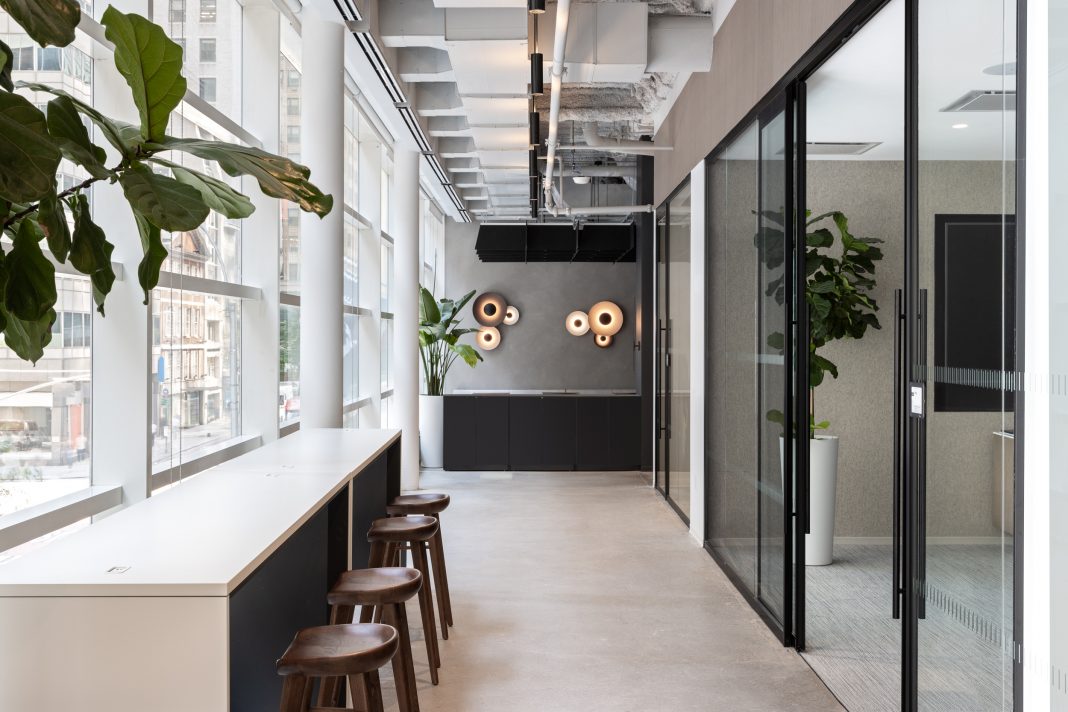As Manhattan’s office market evolves, companies are rethinking their next move — renovate or relocate? Each choice carries unique opportunities for flexibility, culture, and design innovation in shaping the workplace of the future.
The real estate sector is undergoing a profound transformation, shaped by powerful forces ranging from new technology to changes in workplace attendance dynamics. Nowhere is this shift more visible than in Manhattan’s office market, where an increasing number of companies are facing decisions around space and the future of their organization as their leases are coming due.
For some, lease expirations present an opportunity to start fresh in a new building, a new part of the city, or collaborate with a new building owner. Many tenants consider the following as some of the many benefits of relocation:
- Lease Incentives: To attract tenants to sign a lease, landlords provide new tenants with lease incentives, such as Tenant Improvement allowances (TI) or free rent. These incentives can tend to be more favorable when moving than when negotiating to stay in place.
- Space Strategy: Whether expanding or contracting, if the goal is to rethink the current approach to space and design, relocating might provide more flexibility, especially when contiguous space isn’t available in your existing floorplate or building stack.
- Location Strategy: If the current location has proven problematic from a talent attraction/retention perspective, or is in a poor location for brand visibility or access to clients and mass transit hubs, relocation to a different neighborhood might be a great opportunity.
One example of a positive move is our advertising technology client, whose relocation to the Lower Fifth area of Manhattan allowed them to establish a new headquarters in a new part of the city. The location has become a beacon for top tech talent, and street-level signage opportunities allowed the company to proudly plant its flag in this up-and-coming neighborhood. The new location also allowed the company to accommodate its personnel growth, which had exploded during the pandemic.
Relocation projects can pose different challenges, however. For starters, they tend to have higher up-front costs than renovation, depending on the scale of the comparable renovation-in-place project. Additionally, there are always risks in the uncertainty of a new landlord relationship, a new location for commuting, and new lease terms. Some clients who have a strong relationship with their landlord prefer to stay for that reason. There’s also a risk in the impact on the company culture, as staying in place might better preserve the existing culture and company identity.
For various reasons, some clients choose to renovate in place. These factors might include:
- Market Conditions: Renewal is sometimes the best option in a market with dramatically decreasing availability of top office space. While commodity office space has largely lost its viability in today’s market, new office construction has been constrained by rising costs and tighter lending conditions, reducing the amount of high-quality space in the most desirable business districts. As a result, tenants who might once have considered a move are instead considering the opportunity to reinvent their current premises.
- Lower Upfront Cost: Depending on the project scope, renovation-in-place projects can often have a lower upfront cost than a relocation project. If any of the existing build-out, MEP or IT infrastructure can be retained, then cost savings may be considerable.
- Existing Asset Preservation: Staying in place also allows companies the opportunity to preserve elements that would be too difficult to reproduce, such as customized layouts and furniture solutions, complex IT and mechanical systems, or intricate branding elements. This results in renovation that is more targeted and strategic.
One of our insurance industry clients is currently renovating several floors of its Midtown East headquarters. While the project schedule is longer than a relocation due to the need to incorporate swing space strategies, we were able to leverage and build upon some existing elements within the space to develop solutions while still accommodating visitors and headcount growth.
Often, renovation-in-place adds significant limitations, as the workplace is constrained to existing building footprints and contiguous availability if a company is looking to grow. There are also many considerations that go into the phasing of construction and the planning for swing space for employees. With relocation, if properly timed with lease expiration, it’s possible to limit downtime. And, of course, landlords typically provide fewer lease concessions when staying in place.
Ultimately, today’s design imperative is to create workplaces that inspire, adapt, and connect, with experiences that promote well-being, foster community, and reflect organizational purpose. In this pivotal moment, firms must weigh the costs and benefits of renovation or relocation against their goals for reimagining space. These solutions are never one-size-fits-all, as each project and each client is unique.


